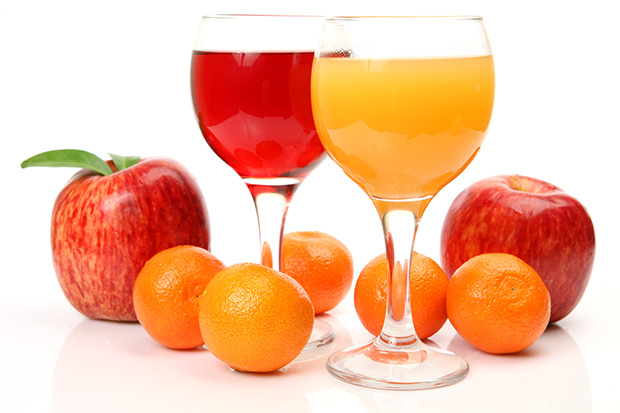IN THE GCC, growing awareness amongst young consumers about the benefits of healthful beverages is spurring interest in fresh juices and low-calorie drinks. Manufacturers, in turn, are expanding their product lineups with these options to match market requirements. The result is a broader selection of fruit juices consisting of 100% packaged fresh juice, drinks with just a percentage of fruit content, and concentrates. More carbonated drinks now come in low-calorie versions. Even the lowly bottled water is winning some sales points over its tap rival owed to the former’s health benefits.

Fresh fruit and juice © Elena Icenko | Dreamstime.com
Trends emphasising healthier lifestyles are boosting the popularity of juices in the Kingdom of Saudi Arabia. More consumers are gravitating toward this type of drink as they seek nutritious choices. Industry watchers predict juice consumption will continue to pick up as more people learn about health and wellness.
Manufacturers, in turn, are maximising the opportunity to grow their markets. They are keen to make sure labelling clearly communicates all the health benefits of the products. Many are expanding their product ranges to offer alternatives besides juices, including bottled water, and even powder concentrates. Juices are typically purchased in multipacks in the KSA, where families tend to be large and so consumption at home is heavy.
In Iran where the most popular type of juice was the fruit-flavoured variety without any juice content, global trends and changes in consumer demands are paving the way for different types of juices, according to Euromonitor. More drinks now have a higher percentage of juice content. Many of these adopt Tetra Pack packaging as opposed to the aluminium pouch packaging typical of five years ago.
These changes are providing consumers with options to enjoy a higher content of fruit—in some cases 100% —in their drink. Many products even boast no additional sugar.
Bottled water is likewise gaining a following in Iran, where widespread use of tap water for drinking has pushed down the capita consumption of the bottled variety, reports Euromonitor. However, increasing awareness about the benefits of bottled water compared with tap water is pushing the former to the spotlight. Greater availability and negative advertisements about the low quality of tap water contribute to rising demand for bottled water.
High price, low fresh fruit supply hindrances
Despite rising demand in Iran for fruit juices with greater fruit content, boosting the fruit content created a market concern. It resulted in a significant surge in unit price that was not acceptable for most consumers. To address the situation, manufacturers and buyers agreed to lower price points and reduce the fruit content in the products.
For consumers looking to save more money amidst the sudden 35% inflation rate experienced in 2012 and 2013, a more economical alternative was concentrates. These products were positioned as a more affordable replacement for expensive fresh fruits and juices, in particular during hot summer months.
Africa has an appetite for fruit drinks
According to a report in the AFK Insider, demand for fruit juice in Kenya has also grown as a result of the government’s restrictions on hard drinks, imposing curfew for the sale and consumption of these drinks in bars. Government also forbids adults from consuming these drinks in the presence of children. Also as a result of the government’s health campaigns against lifestyle diseases, products such as fresh juices, ready-to-drink juices and bottled water are gaining market share.
In South Africa, the potential for market growth in the fruit juice category is also high, according to the South African Fruit Juice Association. Consumption of fruit juice products (orange, apple, and other fruits) in the country is 12 litres per capita.
Even in Uganda where fruit juice prices are prohibitive, consumption is also on the rise, as demographics change – a growing middle class that is also health conscious seeks nutritious drinks.
Juice from locally grown fruits
Also across the African continent in Tunisia, consumers are taking the health buzz a step higher with 100% packaged fresh juices. Awareness campaigns by the country’s Ministry of Health about the benefit of locally fresh fruit drinks are encouraging consumers to choose healthful drinks. Fresh fruit beverages, which retain all the nutrients, are therefore becoming increasingly popular. More consumers are switching from juice drinks to these fresh alternatives.
In addition to fruit juices, low-calorie carbonated drinks are another beverage drink that is increasing in popularity. The small supply of fresh fruit drinks is the main concern. Stores offer a limited variety of fruit juices in fresh format, with the selection usually comprising only lemon, strawberry, and kiwi juices.
NEW BALANCE
 iConnectHub
iConnectHub
 Login/Register
Login/Register Supplier Login
Supplier Login



























